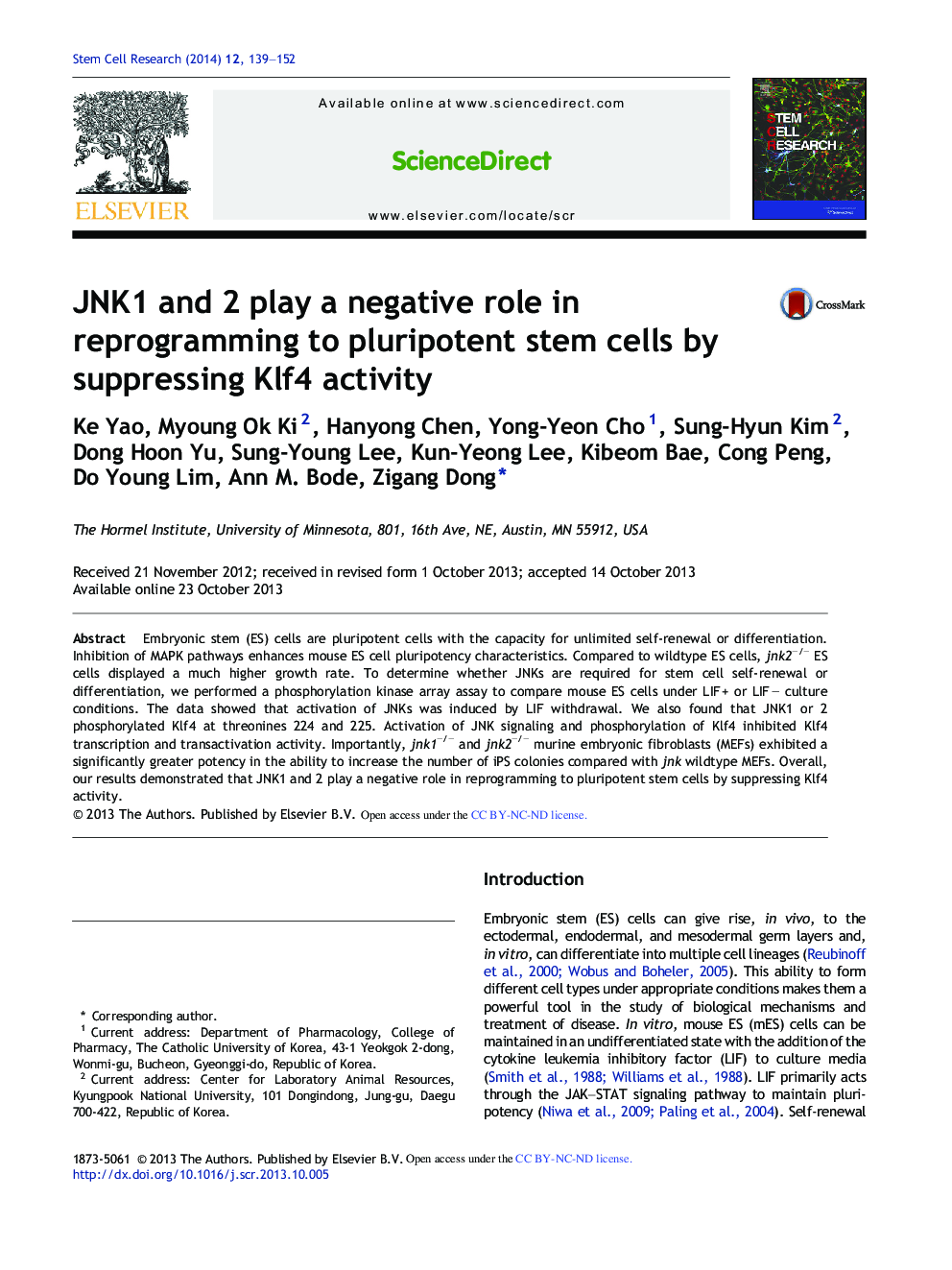| Article ID | Journal | Published Year | Pages | File Type |
|---|---|---|---|---|
| 2094587 | Stem Cell Research | 2014 | 14 Pages |
•Activation of JNKs is induced by LIF withdrawal.•JNK1 or JNK2 phosphorylates Klf4 at threonines 224 and 225.•JNK1 or JNK2 binds with Klf4.•Phosphorylation of Klf4 inhibits Klf4 transcription and transactivation activity.•jnk1−/− or jnk2−/− MEFs exhibit a substantial potency in increasing the number of iPS colonies.
Embryonic stem (ES) cells are pluripotent cells with the capacity for unlimited self-renewal or differentiation. Inhibition of MAPK pathways enhances mouse ES cell pluripotency characteristics. Compared to wildtype ES cells, jnk2−/− ES cells displayed a much higher growth rate. To determine whether JNKs are required for stem cell self-renewal or differentiation, we performed a phosphorylation kinase array assay to compare mouse ES cells under LIF + or LIF − culture conditions. The data showed that activation of JNKs was induced by LIF withdrawal. We also found that JNK1 or 2 phosphorylated Klf4 at threonines 224 and 225. Activation of JNK signaling and phosphorylation of Klf4 inhibited Klf4 transcription and transactivation activity. Importantly, jnk1−/− and jnk2−/− murine embryonic fibroblasts (MEFs) exhibited a significantly greater potency in the ability to increase the number of iPS colonies compared with jnk wildtype MEFs. Overall, our results demonstrated that JNK1 and 2 play a negative role in reprogramming to pluripotent stem cells by suppressing Klf4 activity.
Graphical abstractJnk1−/− or jnk2−/− murine embryonic fibroblasts exhibit a significant potency in reprogramming to pluripotent stem cells.Figure optionsDownload full-size imageDownload high-quality image (201 K)Download as PowerPoint slide
